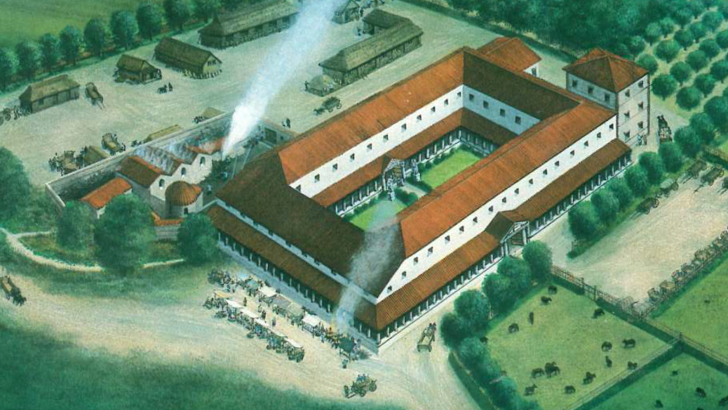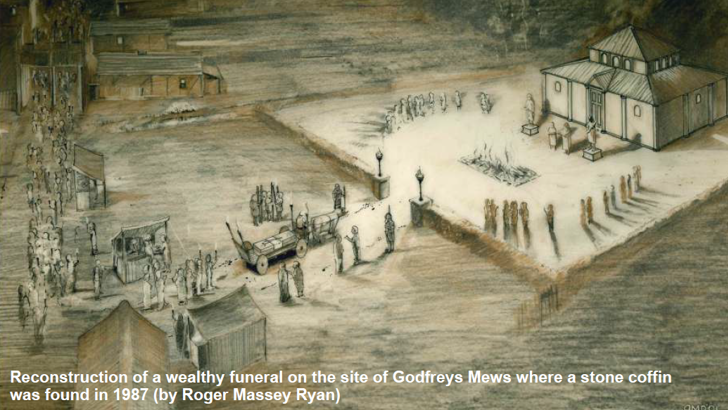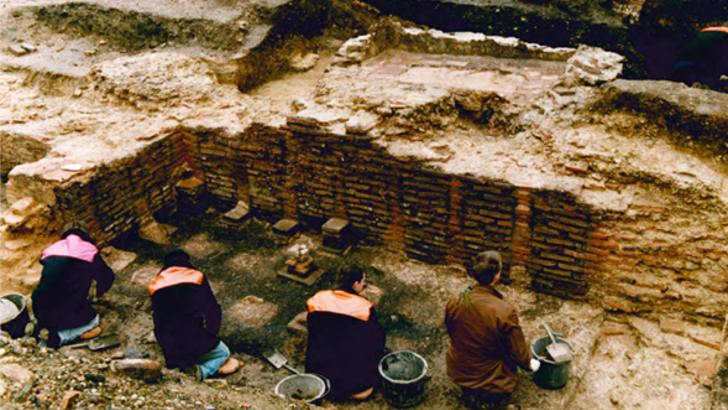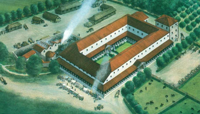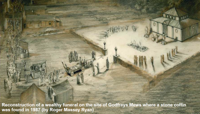Roman Chelmsford
Location of board
Moulsham Street (Stone Bridge end, by Cash Converters)
About
The small Roman market town of Caesaromagus (meaning the plain or marketplace of Caesar) lay to the south of the River Can, along the main London to Colchester road, which the line of Moulsham Street still follows.
It was probably founded in the wake of the Boudiccan uprising in 61 CE as a military road station. In 120s CE, a mansio was built, first in timber and soon after in stone. This building was used by travelling officials and offered overnight accommodation and a change of horses. It was certainly the most imposing building in the town (compare its size with the number of modern houses now on the same site) and it would probably have also acted as the Roman town hall and market. Parts of the mansio and its bath-house have been excavated and walls over a metre high have been found, but nothing survives above ground level.
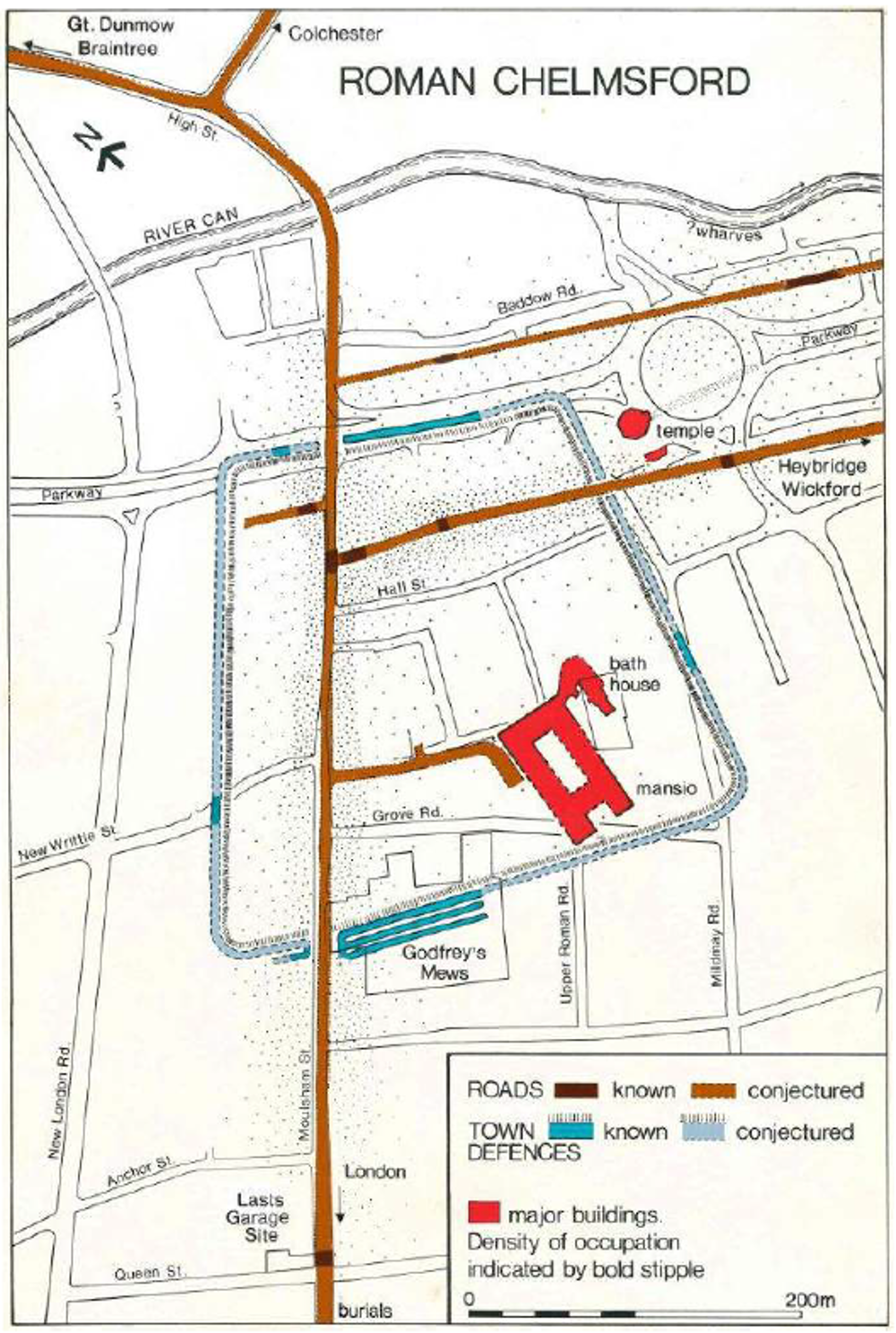
Excavations off Moulsham Street and Hall Street have revealed the narrow, thatched timber houses that once lined the Roman streets. In one quarter, near the Life Church in Hall Street, cattle carcasses were being processed and their horns removed. The horn was highly prized and would have been carved into decorative veneers and hair pins.
At the end of the 2nd century, the town was enclosed by a defensive earth bank and ditch for a short time, presumably a measure against civil or military unrest. On the Godfreys Mews site, between Grove Road and Hamlet Road, the entrance through the defences was protected by three parallel ditches, each two metres deep.
Away from the Roman town centre, there was a religious precinct which was excavated in 1970-71 when Parkway and the Odeon roundabout were built. The religious importance of this site was long-lived and evidence of 1st century bronze brooches, rings and bracelets dedicated to pagan gods have been found. Around 325 CE, an octagonal masonry temple was built. Unfortunately nothing survives above ground today, as the stones used in its construction were later removed for use in buildings elsewhere.
Cemeteries lay immediately outside the town. Burials have been found further down Moulsham Street at Godfreys Mews and in Rothesay Avenue.
At the end of the 4th century, the Roman army left Britain and the civilised Roman way of life slowly collapsed. The arriving Anglo-Saxons never lived in the Roman town, preferring to build their own settlements at places like Springfield and Broomfield. Caesaromagus became derelict and remained so until Norman times, when the river crossing was re-established in 1100, and a new town founded north of the river in 1199.
Excavations have revealed decorated medieval floor tiles, painted window glass, and a bone parchment pricker, used by monastic scribes to follow a manuscript. Digs between Mildmay Road and Roman Road have uncovered the heating system of the Roman baths.
Many of the Roman finds can be seen in Chelmsford Museum.

